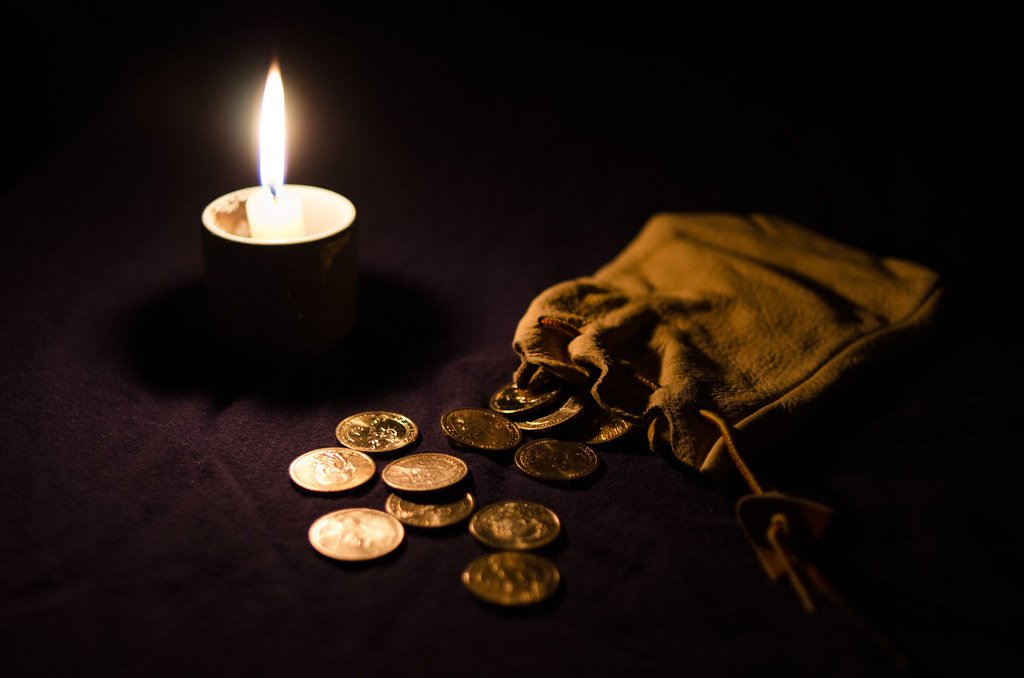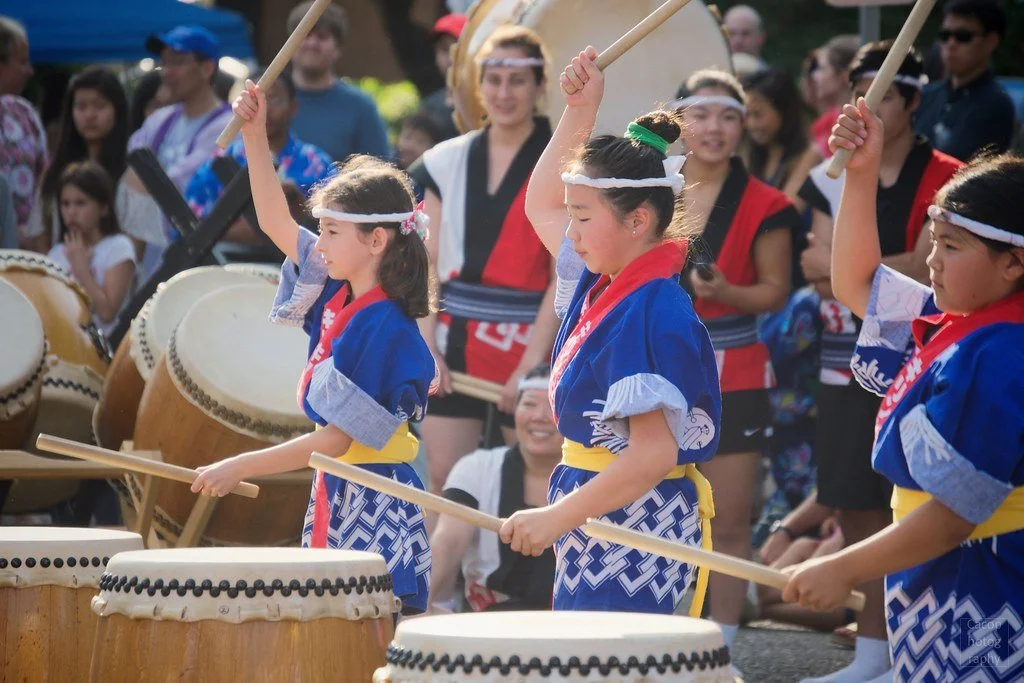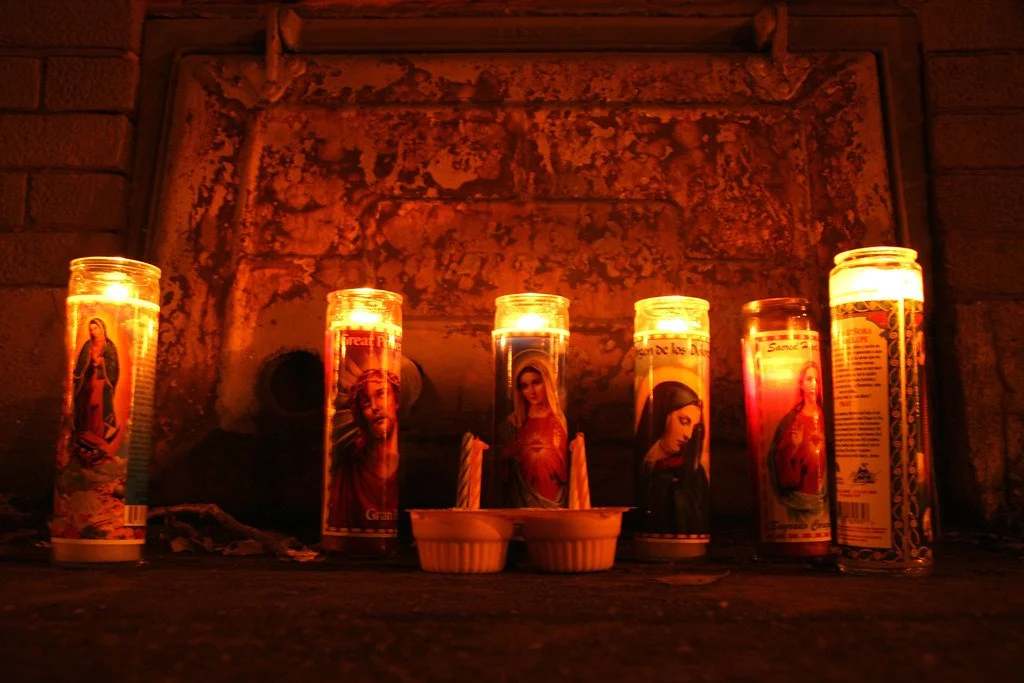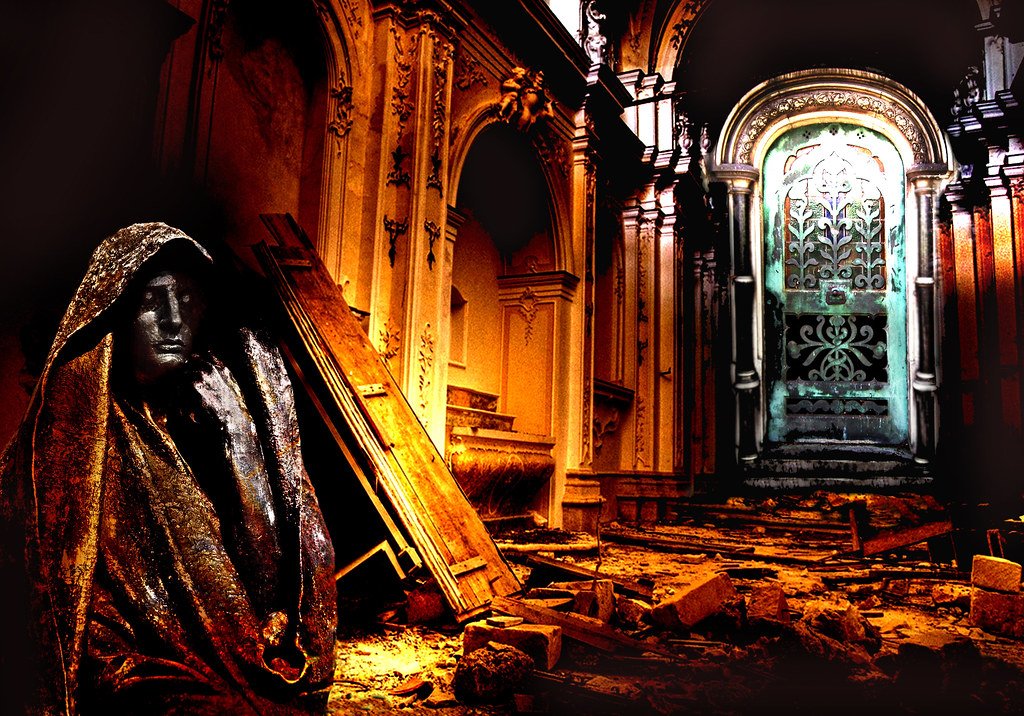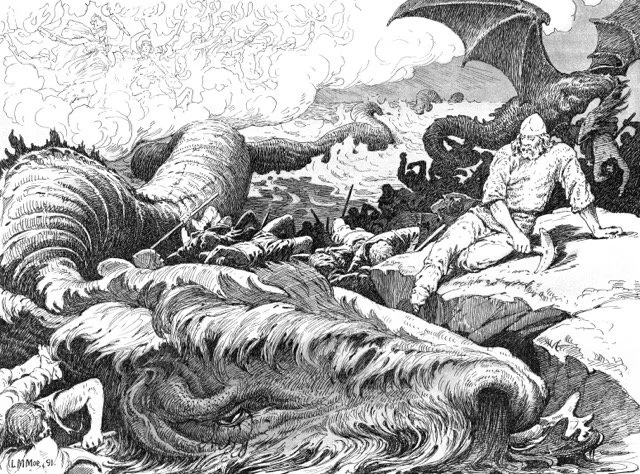Journey through the kaleidoscope of cultural perspectives on death, from India's embrace of reincarnation to the haunting underworld of Greek myth.
Charon’s Obol, putting a coin within the deceased’s eyes as a symbolic fare across the lake of Styx in the ancient Greek underworld. Tim Pierce. CC BY 2.0.
Death, the inevitable destination for all living beings, holds different meanings in various cultures. For example, Egypt sees it as a gateway to a transformative journey, whereas India and Japan believe in ancestral worship and reincarnation. Regardless of the connotations, death reveals humanity's contemplation of life's purpose and respect for the natural world. Here, we delve into the interpretations of death in seven countries:
1. Egypt
Egyptian Mummy. Mamamusings. CC BY-SA 2.0
With a profound mythological heritage, the Egyptians held a deep belief in the afterlife, considering it a testament to the morality exhibited during one’s lifetime. They perceived death as a temporary interruption and acknowledged the importance of honoring the deity overseeing the realm of the deceased both before and after life on Earth. According to Egyptian beliefs, although the physical body may perish, the soul could transcend its mortal shell and embark on a journey to the afterlife. Mummification, a significant ritual, aimed to preserve the corpse, preventing its decay and ensuring its integrity in the realm beyond. The Egyptian concept of death, known as “Duat,” was envisioned as a five-point star encircled by the sun and stars. Within Duat existed mystical elements, including a lake of flames, enchanted trees, and formidable iron walls (perhaps mundane to modern people, but positively spectacular in the largely pre-iron Bronze Age!). Those who successfully traversed this treacherous realm could ascend as Akh spirits. However, this elevation came with two challenges: proving one’s innocence before 42 divine judges regarding their earthly life and undergoing the weighing of the heart against the feather of Ma’at, symbolizing truth and justice. Wrongdoings in life carried weight, making the heart heavier than the feather. While the true complexity of ancient Egyptian afterlife beliefs surpasses this narrative, it captures the essence of their profound worldview.
2. Japan
The Obon festival. Cacophotography. CC BY-NC-SA 2.0.
In Japan, the perception of the afterlife emerges from the interplay between Shinto and Buddhist beliefs. The Japanese understanding of the soul, referred to as Reikon, entails its departure from the physical body upon death to reunite with ancestors. This cultural foundation has fostered a strong ancestral worship tradition, wherein children are entrusted with the responsibility of honoring their parents and forebears through extensive rituals and offerings throughout their lives. By diligently fulfilling these obligations, individuals gain protection against malevolent forces. The Obon festival exemplifies this reverence, with chochin lanterns illuminating the graves of departed family members, guiding their spirits back to the household altars. As death gradually loses its mystique in Japanese society, attitudes have evolved, becoming more open and innovative. Notably, companies like Ginga Stage offer unique services such as launching the ashes of the deceased into space and scattering them in the ocean.
3. Mexico
Day of the Dead Altar. Señor Codo.CC BY-SA 2.0.
Mexican cultural practices around death are most famous for the vibrant commemoration known as the “Day of the Dead”. While the visually stunning and emotionally touching portrayal of the Land of the Afterlife in the 2017 film “Coco” received tremendous acclaim, the actual celebration surpasses its depiction. From October 27th to November 1st, during the “Day of the Dead,” altars adorned with offerings can be found throughout plazas. October 31 marks the opening of the gates of heaven for the spirits of departed children, while November 1 is dedicated to adult spirits reuniting with their families. Mexico wholeheartedly revels in the festivities of the Day of the Dead. Elaborate altars, intricately designed sugar skulls, and vibrant symbols represent this internationally recognized event.
Day of the Dead makeup. Robert Couse-Baker. CC BY 2.0.
La Catrina, a revered figure representing the perpetual cycle of life, stands as an indispensable icon during the Day of the Dead festivities, often brought to life through elaborate skull-like face paintings. Rather than succumb to sorrow over life’s end, Mexicans embrace death as an inseparable aspect woven into the intricate tapestry of existence.
4. India
Puja,a Hinduism ritual , held in Dashashwamedh Ghat. Ganges. Franx. CC BY-NC 2.0.
At the core of India’s perspective on death is the concept of reincarnation, the cycle of rebirth and renewal known as samsara in Sanskrit. Reincarnation serves as a common thread among Hinduism, Jainism, and Buddhism, some of the most prevalent native religions in India. The destiny of one’s subsequent life is determined by their actions, known as karma, throughout their current lifetime. Karma dictates the form into which the departed individual will be reborn. Leading a virtuous life in accordance with the spiritual teachings of sacred texts paves the way to moksha, liberation from the perpetual cycle of birth and death. Regarding the afterlife, Hindus believe in the existence of seven realms, encompassing both higher and lower planes. The righteous ascend to the upper realms, where they are rewarded for their virtuous deeds and subsequently reborn as human beings. On the other hand, those who have committed evil deeds descend to the lower realms, enduring suffering and taking birth as lower beings, such as animals and insects.
5. Greece
The imaginary vestibule of Hades. Maxwell Hamilton.CC BY 2.0.
In the realm of Greek mythology, the underworld is governed by the fearsome duo of Hades and Persephone. Described in the Odyssey as a somber expanse encircled by the Acherusia Lake and traversed by three rivers—Styx, Kokytos (Cocytus), and Pyriphlegethon—it is the shadowy abode where most souls are believed to dwell after death. While some may perceive it as akin to a realm of torment, the Greek notion of heaven lacks a deity personifying its ethereal domains. In contrast, Hades presides over the underworld with a sense of justice tinged with cruelty. A figure so formidable that uttering his name struck fear in the hearts of many Ancient Greeks, he subjects the departed to moral judgment, where heroes may revel in rewards while villains endure the agonizing consequences of their deeds. For ordinary mortals, the passing of their souls is believed to involve a departure from their physical forms. It was the solemn duty of women to carefully dress and clean the lifeless bodies, adorning them in humble garments and placing a coin within the deceased’s eyes as fare to pay for their passage across the enigmatic River Styx into the vast underworld. At the break of dawn, the departed soul is borne away upon the back of a noble steed, embarking on a somber journey towards their final resting place.
6. Sweden
Illustration of Ragnarok. Louis Moe.C BY-SA 4.0.
Deeply interwoven within the fabric of Norse mythology, the Vikings held a faith in the existence of Valhalla—an ethereal realm reserved exclusively for those valiant warriors who, through their unwavering courage, had carved a path of honor upon the battlefield. Battle-hardened Vikings aspired to secure their rightful place in Valhalla through honorable deaths in combat. Once admitted to this hallowed sanctuary, known as the dwelling of the Einherjar, the fallen warriors did not languish in lifeless repose. Instead, they fervently engaged themselves in preparations for the impending Ragnarok, the final battle between the mighty Gods of Asgard and the frost giants. Such epic clashes have since become a recurring theme in the realms of video games and movies, captivating the imaginations of countless enthusiasts.
In the myriad perspectives on death across the globe, its significance is similar to that of life itself. Amid the tumultuous tides of change happening in the world these days, bidding a proper farewell remains an immensely pertinent subject. The imagery of heaven, a sanctuary for the virtuous, and hell, a place of punishment for the malevolent, is just one of many ways cultures have conceptualized an afterlife both past and present. The commemoration and even celebration of death can rival the jubilation accorded to the birth of a new life.
Hope Zhu
Hope is a Chinese international student at Wake Forest University in North Carolina studying sociology, statistics, and journalism. She dreams of traveling around the globe as a freelance reporter while touching on a wide range of social issues from education inequality to cultural diversity. Passionate about environmental issues and learning about other cultures, she is eager to explore the globe. In her free time, she enjoys cooking Asian cuisine, reading, and theater.

